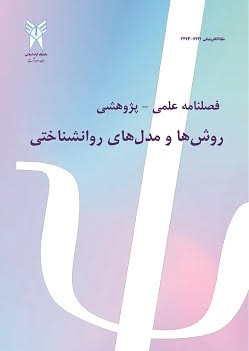اثر هورمون اُکسی توسین بر بهبود رفتارهای کلیشهای د رکودکان مبتلا به اختلال اوتیسم
محورهای موضوعی : تکتونواستراتیگرافیحسین رسول اف 1 , سید ابراهیم حسینی 2 * , ساره بهزادی پور 3
1 - کارشناس ارشد گروه آموزشی روانشناسی، واحد شیراز،دانشگاه آزاد اسلامی ، شیراز ، ایران
2 - دانشیار، گروه آموزشی فیزیولوژی، واحد شیراز، دانشگاه آزاد اسلامی، شیراز، ایران.
3 - استادیار، گروه آموزشی روانشناسی، واحد شیراز،دانشگاه آزاد اسلامی ،شیراز، ایران.
کلید واژه:
چکیده مقاله :
این مطالعه با هدف بررسی اثر هورمون اکسی توسین بر بهبود رفتارهای کلیشهای کودکان مبتلا به اوتیسم انجام شد. این یک پژوهش تجربی دوسو کور میباشد که درسال1394 در مورد 45 نفر ازکودکان 4تا13ساله، مبتلا به اختلال اوتیسم مراجعهکننده به مراکز درمان بیماران اوتیسمی شهر شیراز انجام گرفت. در این بررسی نمونهها به3 گروه 15 نفره کنترل (فاقد تیمار)،شاهد (تیمار با دارونما ) و تجربی (تیمار با اکسی توسین) تقسیم گردیدند. مواد مورد استفاده شامل اسپری درونِبینی اُکسی توسین و اسپری دارونما و ابزار گردآوری دادهها در دو مرحله پیشآزمون و پسآزمون، پرسشنامه مقیاس رتبهبندی اوتیسم گیلیام - ویرایش دوم یا GARS-2بود. در پایان دادههای بدست آمده با استفاده از آزمون کوواریانس مورد آنالیز قرار گرفتند و معنا داری اختلاف درسطح 05/0p<در نظرگرفته شد. نتایج این بررسی نشان دادند که درمان با اکسی توسین، باعث بهبود رفتارهای کلیشهای در بیماران مبتلا به اوتیسم در سطح001/0p<نسبت به گروه کنترل میشود و متغیرهای سن و جنسیت نیزتأثیر معناداری بر مقدار اثربخشی اکسی توسین ندارند. نتایج این بررسی نشان داد که تجویز اکسی توسین به احتمال زیاد از راه اثر بر مراکز مغزی باعث بهبود اختلال رفتارهای کلیشه ای در بیماران اوتیسمی میشود و سن و جنسیت نیزدر این اثر درمانی بی تاثیر است.
Abstract
Introduction: Autistic Disorder is one of the neuro-developmental disorders recognized a series by repetitive and stereotyped behaviors. Due to the increasing rate of children suffering from this disease around the world, this study aimed to investigate the effect of the oxytocin hormone on improving the stereotypical behaviors of children with autistic disorder was performed.
Materials and Methods: This quasi-experimental study is double-blind trial in 1395 on 45 children of 4 to 13 years old, with autistic disorder visited to autism treatment centers of Shiraz were conducted. The samples divided to 3 groups of 15 including control (no treatment), sham (treated with placebo) and experimental (treatment with oxytocin). Materials used include intranasal oxytocin spray and placebo spray and the data collection tool from samples in two pre-test and post-test, Gilliam Autism Rating Scale questionnaire- Second Edition or GARS-2, respectively. In the end, the data obtained using ANOVA and t-test was analyzed and significance difference of data at P<0/05was considered.
Results: The results showed that treatment with oxytocin improves stereotyped behaviors in patients with autistic disorder at p<0/001 compared to the control group and so, age and gender variables have no significant effect on the effectiveness of oxytocin.
Conclusion: Results of this study showed that oxytocin injection possibly through effects on brain centers improves stereotyped behaviors disorders in children with autism, and age and gender have no effect on this treatment.

